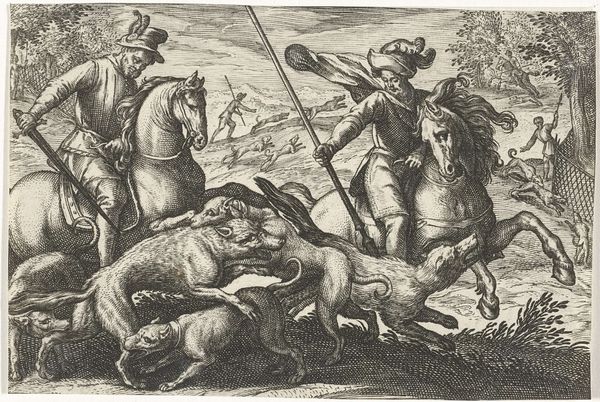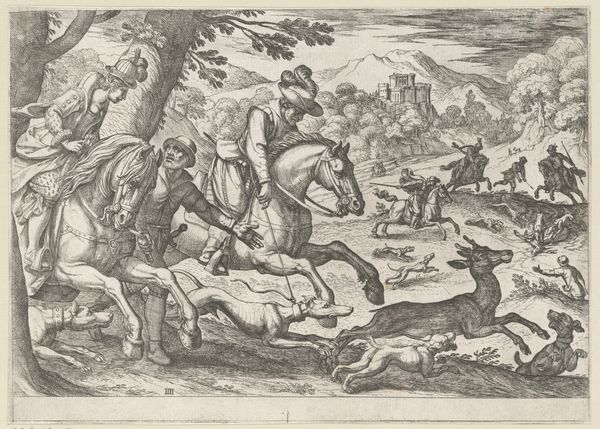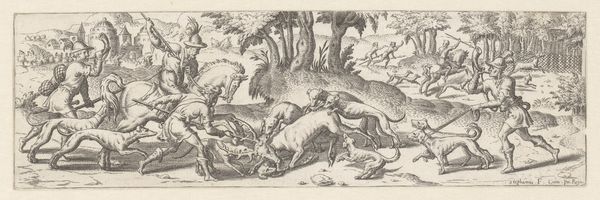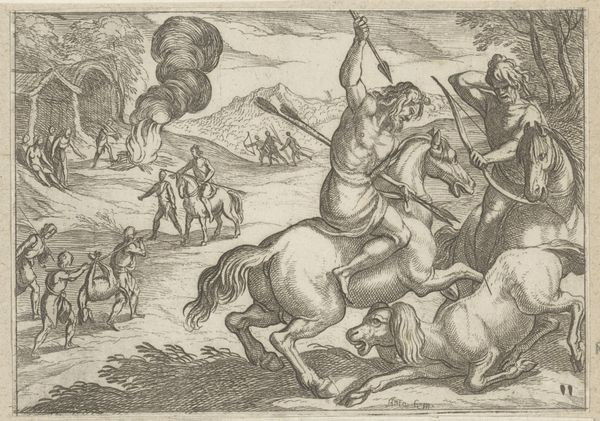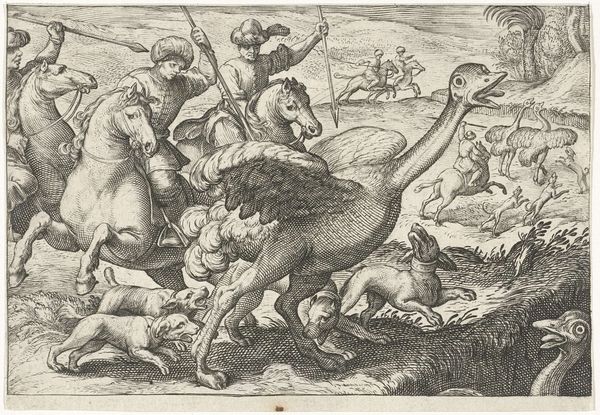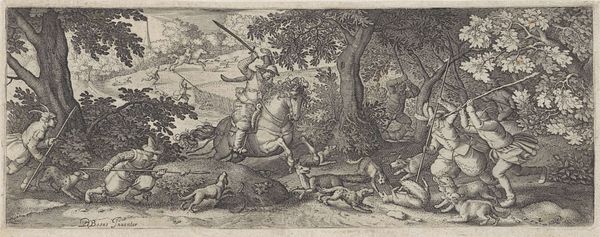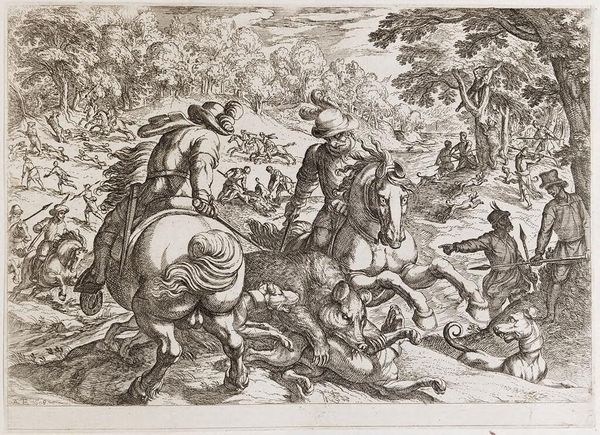
drawing, print, engraving
#
drawing
#
baroque
#
pen drawing
#
dutch-golden-age
# print
#
pen illustration
#
pen sketch
#
dog
#
landscape
#
figuration
#
genre-painting
#
engraving
#
realism
Dimensions: height 169 mm, width 214 mm
Copyright: Rijks Museum: Open Domain
Editor: This print, "Vier honden, een jager en een haas" (Four dogs, a hunter, and a hare) by Abraham Hondius, dating from 1671 to 1691, presents a tableau of a hunt, all rendered with intricate lines. I’m struck by how the labor of both the hunter and the dogs is so evident. What's your take? Curator: The piece offers a window into the material realities of 17th-century Dutch society. We see not just the depiction of a hunt, but also the economic system that made such scenes commonplace. The image acts as a commodity; can you see how its production, as a print, reflects the growing market for art during the Dutch Golden Age? Consider also the materiality of the work itself. Editor: The "materiality?" How so? I’m seeing mostly dogs! Curator: Look closely. The artist's labor, etched into the metal plate, and then transferred to paper, results in multiples available for trade. This contrasts with the labor involved in hunting itself, a pursuit increasingly associated with leisure for the rising merchant class, while it remained hard physical work for many others. And the availability of paper— how does that factor in? Editor: Oh, I see! Paper wasn't always so easily obtainable. So the print is not just *of* hunting, it's also *of* a specific economic moment, thanks to its materials. It shows this interplay between different kinds of labor. That is pretty thought-provoking. Curator: Precisely! The consumption of such images provided a vicarious experience of the hunt, which reinforced the socio-economic status of those who could afford it and the labor it takes to make this art possible. Editor: Thanks to your insights on process and context, I see so much more than just dogs and a hunter! It’s a reflection of the era’s class structure, right down to the printmaking techniques.
Comments
No comments
Be the first to comment and join the conversation on the ultimate creative platform.
